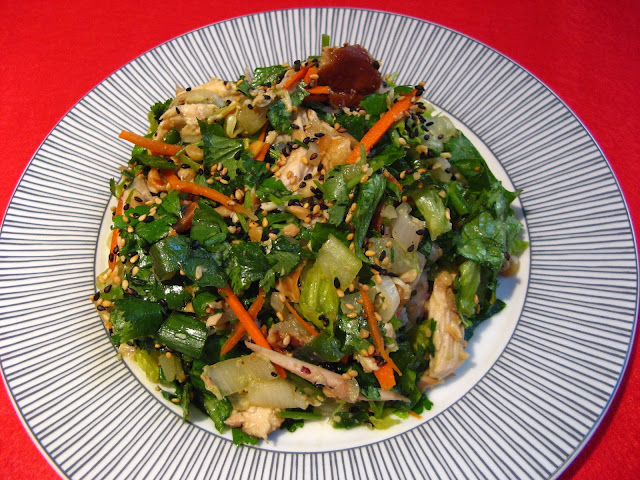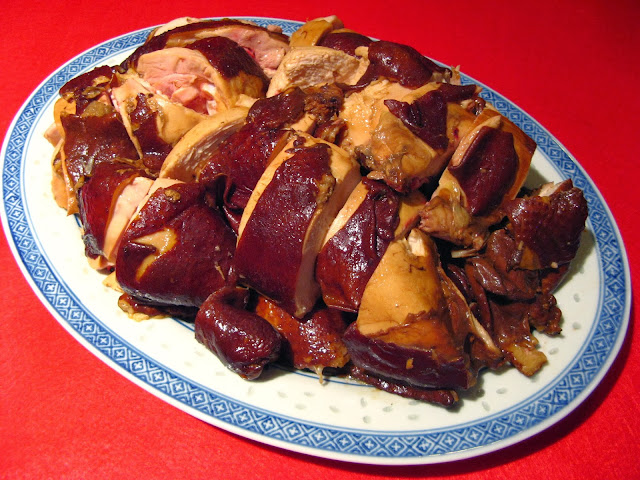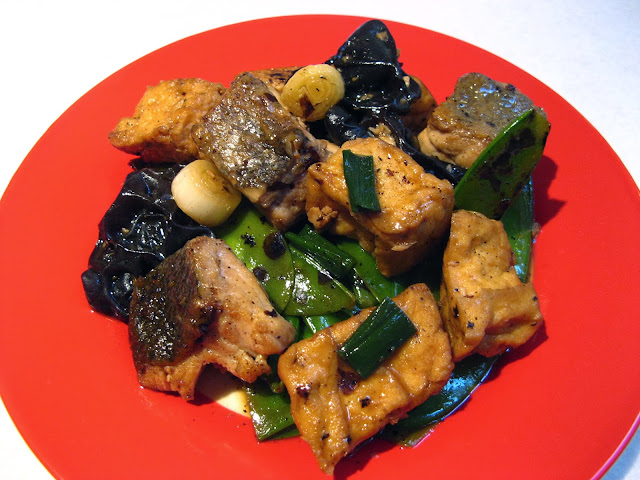This recipe was updated on 15 Aug 2015. Some equipment was
added and hyperlinks fixed.
My Mom would make her Chinese chicken salad for family
gatherings, and since I have a very large family, there is no such thing as
making just a little Chinese chicken salad. She would roast two chickens and
hand shred the meat. Hand-shredding (手絲, sau2
si1) the chickens was an important step, since the Chinese believe
that hand-shredding adds flavor to the dish (just be sure your hands are washed
and clean!). All the other ingredients also require time to cut, chop, and
crush in order to get to the finished dish. Note that making this recipe is a
two day process.
I just recently asked my Mom for the recipe (which is found
later in the post). The first time I made the dish, it didn’t turn out right. I
used chicken parts and increased the amount of dressing. All wrong; since you
need the gelatin from a whole chicken to flavor the dish, and just a small
amount of dressing is required since the salad is almost “dry” when compared to
the “wet” dressing used in most salads.
My second try was more successful. This version of the
recipe is slightly different from my Mom’s original, with minor changes to the
salad and dressing ingredients and quantities, and the taste was close to my
Mom’s too. However, the quantity of salad hasn’t changed, so there’s still no such
thing as just a little Chinese chicken salad.
Enjoy!






